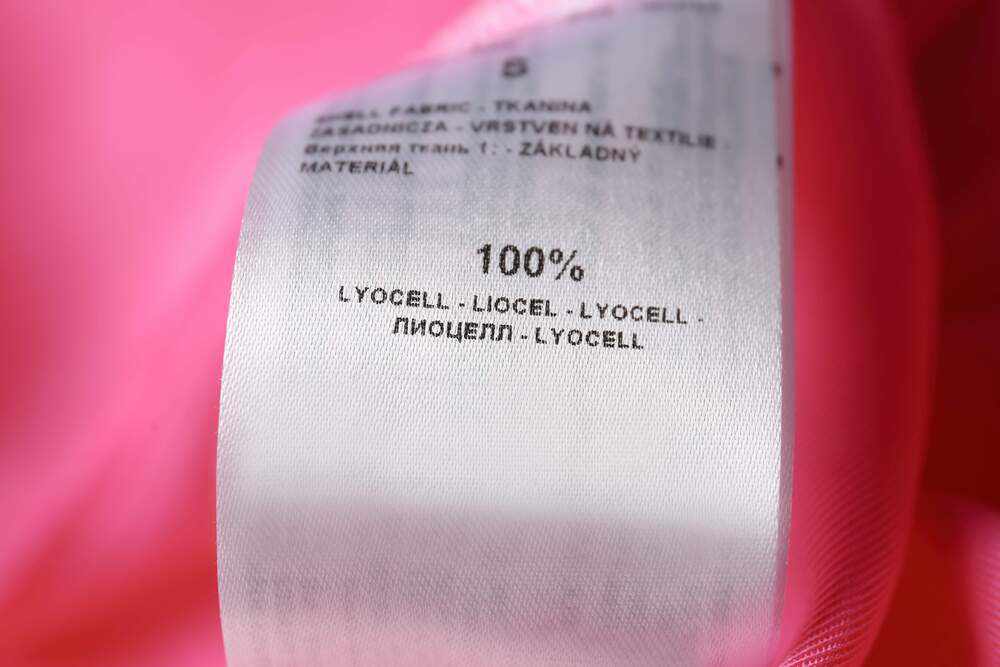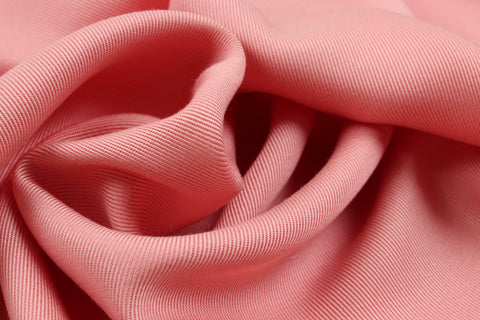
TENCEL™ and Lyocell: Improved Fibres, Powerful Rewards

As consumers grow more environmentally conscious, lyocell fibers (such as TENCEL™- a well-known trademark version from the Lenzing Group) are on the rise. Natural fibre textiles continue to surge in popularity, and although manmade, lyocell shares the sustainable pedigree of materials like organic cotton. It is also versatile, supple, and durable – and an essential part of any textile collection.
What Is Lyocell?
Lyocell is a type of rayon. It’s a manmade fibre derived from cellulose and was first developed in 1972, in the US. The wood pulp from hardwood trees such as birch and oak – or from woody plants like eucalyptus and bamboo – is chemically digested and rolled into sheets. The sheets are then dissolved in an organic compound, filtered and pushed through spinnerets to create fibers. The fibers are drawn out in the air, giving them their characteristic strength. The entire manufacturing process, from raw cellulose to baled fibre, takes about two hours.
What Is TENCEL™?
TENCEL™ is a key brand name for lyocell and other cellulosic fibers of botanic origin, produced by Austrian fibers supplier Lenzing Group. According to Michael Kininmonth, a Lenzing spokesperson: “The blend composition of the fabric must be a minimum of 30% TENCEL™ to be able to use the brand name”. In February 2018, the Lenzing Group repositioned TENCEL™ as a textile premium brand at Première Vision Paris, showing its faith in the future of the fibre. The company offers lyocell filaments to be used in the production of textiles for activewear, intimates, denim, home and luxe fabrics.

The Environmental Benefits of Lyocell
Biodegradable, they are also made in a closed loop process: there are no harmful manufacturing by-products, and the solvent (amine oxide) used to process the fibre is non-toxic and can be almost completely recovered and recycled for further production.
The cellulose used in the best lyocell options on the market, including TENCEL™, derives from trees in managed farms. The production uses less land and water than cotton manufacture – one estimate from A. T. Kearney Business Analytics Consultancy suggests that cotton production uses 20 times more water than lyocell and five times as much farmland. In addition, TENCEL™ itself is made from eucalyptus plants that don’t require pesticides or irrigation and can be grown in land deemed unsuitable for farming. TENCEL™ production forests have been certified by the Forestry Stewardship Council.
It is a good alternative to viscose, as its production avoids many of the pollutants created by viscose manufacture. The non-profit sustainability organization Made-by.org rates TENCEL™ as a Class B material – the same as organic cotton. By contrast, viscose is rated a Class E material, this being the poorest rating for environmental impact. The chief difference is the solvent used to process wood pulp: amine oxide is an organic solvent, unlike the carbon disulphide and sodium hydroxide used in viscose production, which can contaminate the water, the soil, and the air.
The main environmental issue with lyocell production is the amount of energy it uses – something creators are attempting to address with more efficient manufacturing methods. The Lenzing Group, however, has claimed that low-carbon biofuels can be used to manufacture the fibre, which would help to reduce carbon emissions.
Lyocell Uses and Blends
This fibre is 50% more absorbent than cotton; it is also breathable and less susceptible to bacterial growth. These qualities make it ideal for activewear. As such, it is used in clothing by brands such as Patagonia and Reformation, which also have an environmental friendly market position. Lyocell can also be manipulated to have a stretch without being blended with synthetic elastomeric fibers like spandex, making it an excellent alternative for synthetic manmade fibers such as polyester, which are mostly non-degradable and highly polluting.
The yarn can be spun with cotton, linen or wool and be knitted or woven to create a variety of textured materials, from suede-like to silky or rough. Lyocell fibers hold pigment well and can be dyed in any color. They are wrinkle-resistant, drape well and can mimic textures such as leather and denim. Because of its smooth fibers, breathability and color retention, TENCEL™ denim is now used by brands including Gap and H&M.
There is huge potential for lyocell blends, because of the qualities it can bring to materials with which it is mixed. Thanks to its fibre strength and shrink-resistance, it can help to prevent garment shrinkage during washing when blended with cotton. Meanwhile, a linen and lyocell mix is becoming highly sought-after for supple women’s suitings, as seen in the latest materials trade shows. It has high durability, which makes it valuable for apparel and home textiles as well. Check out our selection of lyocell fabrics here.

The Future of Lyocell
The Asia Pacific region accounted for over 65% of the global lyocell market in 2013, according to a report from the Transparency Market Research, as the growing population and improving the standard of living in developing countries sparked a need for increased textile manufacturing. In turn, this stimulated demand for the fibre, especially due to its environmentalist approach. In Europe and the US, the heightened awareness of environmental factors in garment production, particularly biodegradability and sustainability, has achieved the same rise in demand.
One of the biggest impediments to lyocell market growth is its price, as the fibre is more expensive to manufacture than linen, rayon and cotton. However, its sustainable credentials give it an important selling point and its market is predicted to rise at a CAGR (compound annual growth rate) of close to 8% over the next few years, said the Business Wire report about lyocell fibre market.
As information about the fibre proliferates, so does awareness of it, increasing the consumer demand and desire for lyocell and other natural manmade fibers with a more sustainable impact on the planet and the textile industry.
